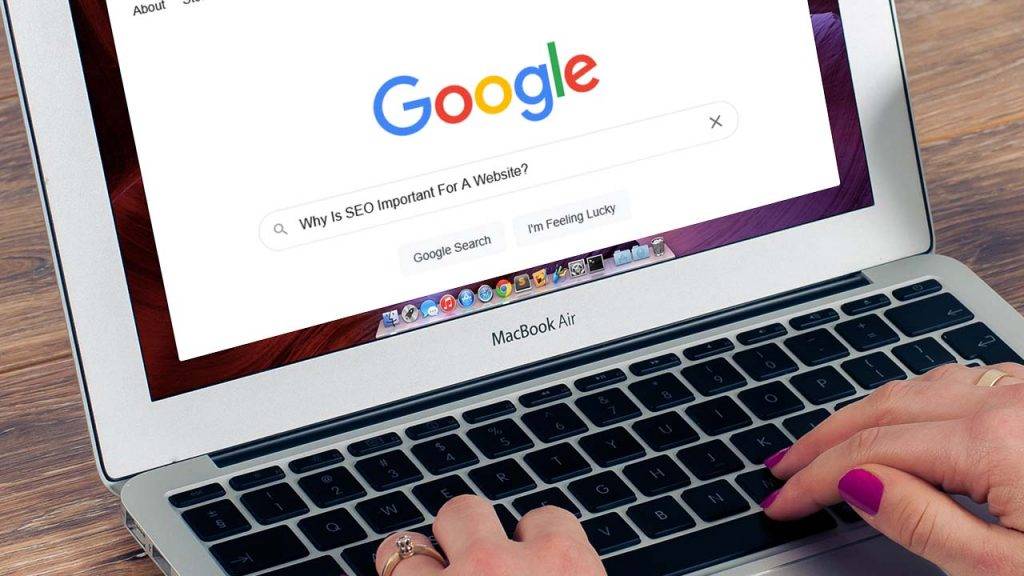Featured photography: National Cancer Institute
Y
our healthcare website can transform an online health search into an office visit. And that’s the goal: to generate revenue through your website!
For that, your website must be aesthetically pleasing and extremely easy to navigate.
And it doesn’t have to be a headache to set up, so long as you have the right tech team, i.e. a professional graphic designer that knows their stuff!
Brainstorm and Map out your Healthcare Website

Consider features suited to your specific requirements and roughly map out each page of your website;
- Will you need a public website integrating a portal for ongoing clients to consult their personal information?
- Will clients pay their medical bills online?
- How much information about what you do will you be uploading?
- Will you have pdfs or pamphlets to download?
- Do you have medical website guidelines you must adhere to?
- Etc.
Patients are only patients for a tiny part of their day, so it is important that your website be easy to access, has understandable information, is simple to navigate, and has a clean design.
Key Features to Consider
1. Bet on appearance and simplicity.
Use colour psychology:
It’s been proven that brand colours can impact your consumers and their decision-making process.
For example, if you’re a dental practice, you might need to consider calming and soothing colours (like shades of blue) to get the most dental-phobic client to book an appointment! Whereas a psychologist’s website could use shades of green as research suggests that it improves pain and reduce anxiety.
Build a narrative with pictures:
You can never go wrong by greeting online visitors with pictures of your patients’ smiling faces. This tells a story and conveys emotions about your practice without using any words.
You can also create a narrative with pictures woven throughout the pages. For example, a physiotherapist could empower visitors to make changes in their life by showcasing what it could look like; pictures of healthy people hiking, surfing, or doing any kind of physical activity.
Make it user-friendly:
Health websites are usually full of useful information and content, but you need to make it super easy for your visitor to find the right pathway for them.
Use icons on the front page to find the right doctor and book an appointment immediately, access necessary paperwork before an appointment, contact the office, and find the blog section.
And if your subject is very intimidating, find ways to make it inviting, warm and easy to understand.
“make it super easy for your visitor to find the right pathway“
Make it mobile-friendly:
This is usually integrated into the platform you’re using, but you absolutely need to check that your website translates well to a mobile version, as most online searches are done on them.
.
2. Answer the ‘Why’
Why choose you?
On your ‘About’ page, showcase what makes you unique and what makes you the best at what you do.
Common unique selling points are: years of experience, how long you’ve been working with the community, how many experts you have access to, your large range or your niche, your abilities (hands-on, backed-up by research, etc.) and your ratings.
For increased credibility and for clients to feel further at ease with you being awesome at what you do, it’s also great to include industry associations you are a member of or involved with, as well as your academic qualifications (and those of your staff).

Show your gold stars!
In this day and age, testimonials, reviews and gold stars are your best sellers! People want to hear about other people’s experiences. Showcase this on your home page!
For example, put a few of your best testimonials on the home page that would lead to a dedicated testimonial page.
Write FAQs:
It shows you care! And in the health industry, that’s what your patients will look for: your caring side as an individual and as a company. It takes time to write, but it’s worth it.
.
3. Choose a clear CTA and approachable tone
Choose one or two CTA:
A clear Call To Action on the front page of the website makes it possible for anyone and everyone to find a doctor, request an appointment or access any other information they may need.
This might not surprise you, but most patients prefer online booking as it makes the process painless, so make it a big, unmissable button! Most importantly, online booking might lower your costs of hiring a receptionist. Ask yourself if this role is required as someone in a full, or part-time capacity or not. For example, a neighbourhood practice with mainly elderly patients probably should keep a receptionist, as that demographic of patients prefers to speak to a human. As your business gets to the point where the majority of bookings come online, then a part-time receptionist may be a more cost-effective option.

Speak directly to your client – be conversational:
Chances are the information you’re providing is quite difficult to understand for the regular folk. Make it easy to read, or they’ll look elsewhere. Imagine that you are talking to a client or patient as you would at your business – for some parts of your website that tone of voice could be the best style to use in the text.
4. Socials and press
Press:
Do you have any noticeable press achievements? Put the logo of the medium you’ve been published in on your website – if it’s recognisable, it is a great way to build trust with your visitors.
Socials:
They’re an integral part of making business nowadays. It’s a way to engage with your visitors, showcase more personality and be more conversational.
Use it as much as possible if you have a sizable social media presence (Facebook, Instagram, Tik Tok, LinkedIn, Twitter). They’re a great tool for nutritionists right now.
If you do, always present a cohesive brand identity.
Find some examples here.
.
Some Indispendable WordPress Plugins
Customer interaction tools:
- Easy Social Share Buttons
- Request Callback Plugin
- Client Portal Plugin
- WP Customer Area.
If you can invest in these and be responsive, they’re a great way to answer your visitors’ questions, assuage their last concerns and get them to book an appointment.
Appointment booking tools:
- Booking Calendar
- Appointment Hour Booking
- KiviCare
- BOOKLY
- Easy Appointments.
Use the tool to make, manage, and track patient appointments.
Form plugins:
- Gravity Forms
- OptinMonster
- Jotform.
Your visitors are going to want to connect with you via sending a message to you, and these also keep a record of their contact information for when you start interacting with them.
Blogging tools:
- Smash Balloon
- Revive Old Posts
This way, you can post niche articles and position yourself as a trustworthy authority in the healthcare industry. It is also a great strategy to engage with your audience.
Performance:
- Yoast SEO
- Jetpack
- Akismet
- WP Rocket
- Optimole
- MonsterInsights
A faster website for visitors, and the ability to see the analytics of where those visitors are coming from, is very important.
Other:
- DICOM plugin
- Hospital Management System
Some businesses in the healthcare industry may require specific functionality on their website.
Find the one that works best for you. Some of them are really powerful and can manage your patient system, patient’s medical history, secure payment portal and patient feedback.
Think of all the companies, like Amazon, Uber, or Facebook, that have spent years curating an easy user experience. In their daily lives, your potential patients are used to this level of friendly user experience. Your website needs to be as easy to use; otherwise, you’ll lose them!
We design highly intuitive websites! Don’t hesitate to reach out to speak further with us.
.

Creative genius, talented wordsmith and all-rounder copywriter up for the grabs! If you can’t stand the look of your copy right now, she’ll shape your rambles into the most compelling words.
Marie Rene | LinkedIn



